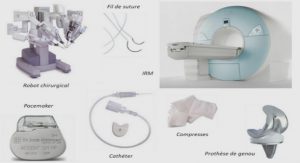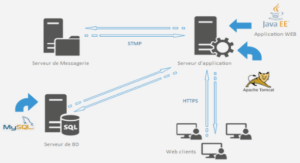Describing Network Requirements
Through the introduction of two concepts known as the Intelligent Information Network (IIN) and Service-Oriented Network Architecture (SONA), Cisco has made new recommendations for the way networks are designed and implemented based on the particular size and business need to be met.The IIN concept provides a means of articulating the evolving role of the network in enabling all components of an Information Technology (IT) infrastructure. The network is the common denominator that brings all the pieces together. This new view of the network’s role in today’s business models provides a means of reclassifying that role from mere transport into a service- and application-oriented role. SONA provides an underlying foundation (or framework) encompassing all technologies, applications, and services, combining them into a single entity focused on becoming an IIN. In support of this, Cisco has released the Cisco Enterprise Architecture (CEA). The CEA is an enterprise-wide model that allows companies to protect, optimize, and grow their infrastructures as business needs dictate. The CEA provides a comprehensive design and implementation resource for a wide range of service offerings required in the typical network infrastructure today and into the future, including Campus, Data Center, Branch, Teleworker, and WAN architectures.
Intelligent Information Network
The Intelligent Information Network (IIN) offers companies an understanding of how the role of the network is evolving to meet business needs. The IIN vision is essentially the concept of network simplification through the alignment of technology and business priorities. Beyond evolution, the role of the network is expanding as more and more services become available network offerings. Cisco has established four technological roadmaps specific to the individual business needs of its customers. Each of the four roadmaps defines the IIN vision for a particular market segment or business type. These architectures are meant to show businesses how to look forward three to five years in planning network expansion. These four technological roadmaps are as follows:
Together these comprise the foundation of the IIN. The goal of the IIN is to build intelligence across multiple protocols and infrastructure layers to allow the network to be more aware of the needs of its users and respond efficiently to those needs by allocating needed resources and/or applications regardless of the nature of the connected device. The network aligns itself with the business priorities of an organization through services, availability, adaptivity, and resilience. The Cisco vision of the IIN composition includes these features:■ Integrated services phase—With full network convergence, IT resources can be pooled and personnel can be cross-trained and utilized more efficiently. This remedies the age-old issue of having only one “go-to” person in IT. Each IT staff member becomes a “go-to” person. Diverse resources required by individual organizations and personnel can be virtualized and moved into the network so that a new degree of flexibility can become reality. This flexibility comes into reality by using the network as the platform—a single resource capable of providing common services to all applications. Rather than having hundreds or thousands of mission-specific servers, the network becomes the platform. The servers are moved into the network as virtual services, thereby providing immense savings in hardware, power
The path of evolution for business services and applications is emerging into a more efficient, flexible, and dynamic model. This is the IIN. The network is the platform. Individual resources can be allocated dynamically, as needed by resource-hungry applications or services. Resources such as CPU, memory, and storage can be added and/or removed on-the-fly and without impact on other processes. Even better, the cost of such a model is reduced through shared resource utilization. No longer are dedicated resources needed for mission-specific applications. Instead, the network maintains resource pools that provide dynamic allocation of resources on demand.For enterprise networks, SONA provides the architectural framework necessary to build an IIN. SONA leverages the network to allow interactive services to be added to it. This provides the additional benefit of allowing loosely connected services and/or applications to communicate, yet remain independent of each other. This collaborative capability permits provisioning of a new level of service, allowing an enterprise to offer its user community the same network experience, including applications, services, and capabilities, regardless of their location or choice of network- endpoint device.
Networked Infrastructure Layer
The lowest of the three SONA layers provides the point of interconnection between various IT resources. The Networked Infrastructure Layer encompasses servers, storage, and network- connected endpoints. These resources exist in various volumes and geographies throughout the network. The Networked Infrastructure Layer provides the common transport and connectivity between required services such as CPU cycles, storage, memory, and I/O. Rather than using individual, dedicated (or mission-specific) resources, SONA sees these elements simply as resource pools.The SONA model reaches out across network geographies to pull all resources into a single, logical entity. The architecture includes specifications on the construction of all of these geographies, including the campus, branch, data center, WAN/MAN, and teleworkers. Each is addressed individually in the SONA model as each is crucial to the creation of an IIN capable of providing a common user experience anytime, anywhere and from any device.No longer are individual servers dedicated to mission-specific roles. They become part of a bigger picture and a shared resource. Flexibility is achieved when virtual resources are available on an as-needed basis over a shared infrastructure without having to make any change to the underlying network architecture. As silos are removed and hardware/software investments further leveraged as shared resources, individual components can no longer negatively impact business operations in the event of maintenance, failure, or another service-impacting event.





